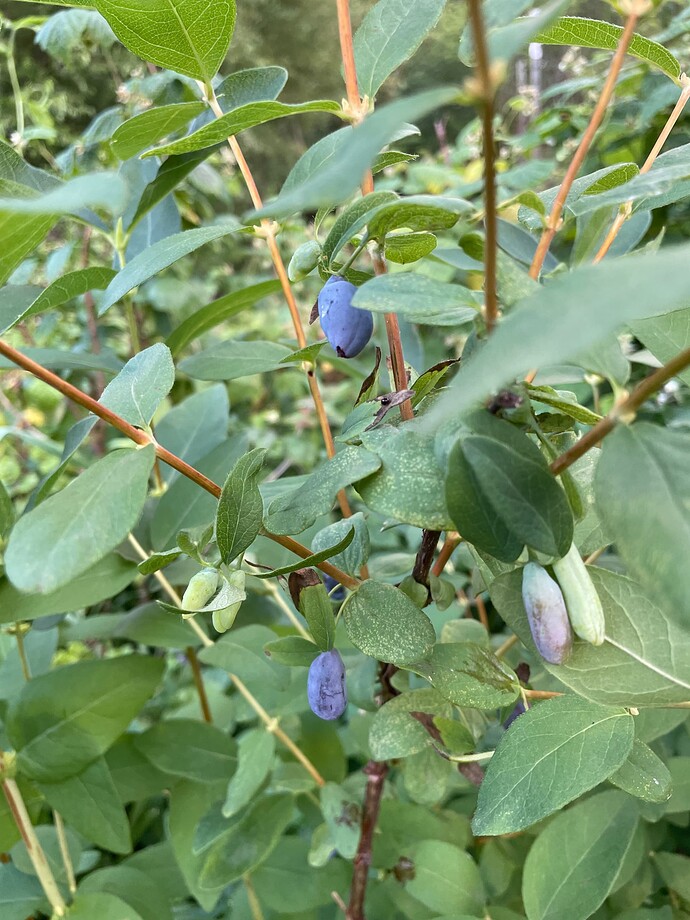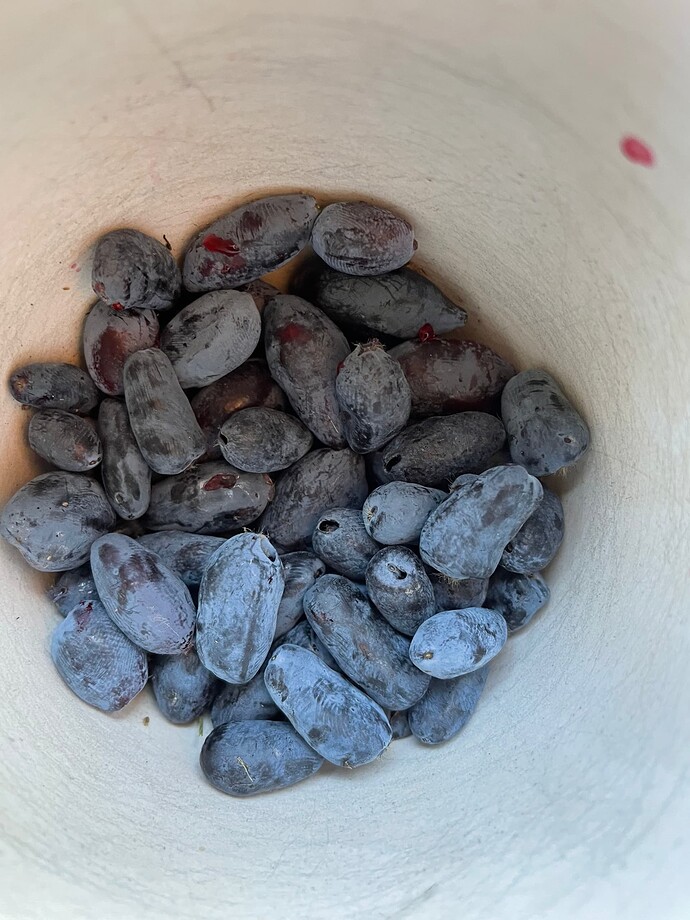try putting some cardboard around it and put about 3in. of mulch. bet it will take off for you.
It’s possible that it’s a combination of things. I have the other honeyberries planted with various trees (apples, pears, peaches, paw paws, etc.) and perennials (strawberries, mums, herbs) and they are doing a lot better than the one I have by the natives and willows.
It’s also very possible that it just needs to be taken care of (mulched) like the others are as you are suggesting, @steveb4 .
@FarmGirl-Z6A , @steveb4, @BlueBerry Thank you for all the good suggestions. I put cardboard around as adviced and some mulch over it. Temperatures really climbed this past week, we went from low sixties to nineties in one day. and stayed there. I hope the cardboard helps to keep them growing for a bit before the heat defoliates them. So far the two surviving bushes are doing well.
I got the new bushes from honeyberry USA. They are small, which I expected, but what really worried me was that one of the plants had two tags, with different identification each. Now I am wondering how much I can trust that the tags reflect the actual variety of the bush. The plant with two tags is either a Maxie honeyberry or a Northline Saskatoon  . Have you had misidentification problems with Honeyberry USA?
. Have you had misidentification problems with Honeyberry USA?
I have a puzzler for you. Only one of the two bushes, Cinderella, bloomed. Two little flowers. I don’t have any other honeyberry around, and neither of my neighbors do to the best of my knowledge. So I was fully expecting that the blooms would fall and do nothing. And yet, lo and behold, I got two small green fruits growing. What we got is tons of the invasive honeysuckle in the forest around the property. Are there any reports of Japanese honeysuckle ( Lonicera japonica) cross-pollinating with honeyberry (Lonicera caerulea)? Sometimes pollen from a related species can induce fruit production even if no fertile seeds are created. That would be very interesting if that were the case here. Most likely the fruit will end up falling before maturity, but I am keeping an eye on them. Curious if anyone else has observed this.
Thanks!
I got an order from Honeyberry…the plants exceeded my expectations (except one tiny honeyberry that obviously they didn’t grow but came as a plug from Maxine Thompson’s breeding program). (Such probably the case of your ‘Maxie’).
But, basically, you should be able to look at pictures online and diffrentiate the honeyberry from an amalanchier (Saskatoon).
As to Japanese, Canadian or Russian lonicera crossing…yes if they bloom at overlapping times.
we also have native honeyberries that should cross with them. they share the same region as the the Jap. honeysuckle also so its possible they cross pollinate which is good news for you.
I was not aware L. caerulea was native to North America! Indeed it is good news, as there is less likelihood the bush will be short of pollen. We have many native bees visit the various bushes and trees, they must be bringing the pollen from some wild bushes. Are any if the native honeyberries used in the breeding programs? I only see Japanese and Russian varieties listed as parents. maybe we can get some local adaptation genes from the north American pool.
Hi BlueBerry,
I am pretty confident the plant is a honeyberry, not a saskatoon. Opposite leaves. But as far as separating the different cultivars of honeyberry, I don’t think is possible. I will have to trust that the bushes are what the tag says. I was concerned because I picked the plants based on their bloom times and they will go to different parts of the property, and I wanted to make sure they went with their pollination partners. But now with the knowledge the wild bushes can pollinate them, it is less than an issue. Wasn’t that lucky?
google mountain fly honeysuckle. ive seen them in the past before i knew what honeyberries were but i dont remember where i saw them. if i could find them id transplant a few .
The honey berry bushes finally put a tiny harvest! So far, Maxie has produce the most and with bigger berries. As others have pointed out, honey berry is a big misnomer. They are tart! I ate one today that had fallen by itself and was soft and wrinkled. I thought I could detect some sweetness. But it was probably my imagination. Luckily for the bushes, I like sour fruits and I think they will make great jelly. The long period of mild weather and plenty of rain agrees with them. They finally grew past the 2 feet. Maybe next year I will have more than 1/2 cup. All and all happy with them.
im not a big fan of them in jam. black currant, raspberry and blackberry jam are much better to me. i like them dried in granola or fresh frozen in yogurt/cereal.


